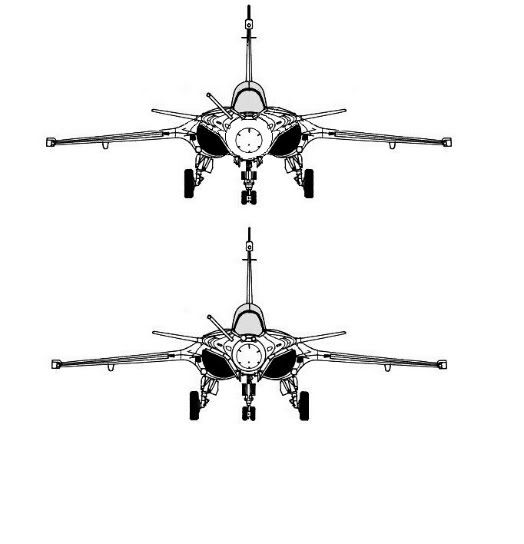indranilroy wrote:Anyways here I repeat again:
Suppose you send EFs with SUs ... The EFs don't have the legs ... but a chain is only as strong as its weakest link ... so the whole contingent will have to concentrate on missions which require legs only as long as that of EFs ... Rafale's won't handicap the Su-30s this way.

With two external fuel tanks the EF already has a range comparable to the Su-30MKI. Yes the Rafale can fly with upto 5 external 2000L fuel tanks enabling it to far far outrange the Sukhoi but I don't think that's a serious requirement.
And imagine Su-30s using their huge radars to scan the huge horizons with its radar while Rafales go in silently with their superb A2G loads ... My question is Su-30 is alread a fab A2a machine, its compliment should be a superb A2G machine. At the moment there is no doubt which of the 2 competitors is the best A2G platform.
Well this may be blasphemy on this forum, but I'm not so confident about the Su-30 being such a superlative machine. I hope to heavens I'm right, because if I'm not, there are over 300 of them to our north just an AESA upgrade away from becoming a very very imposing threat. We're all confident about the Rafale chewing up and spitting out the Su-30MKM but is the difference between the MKI and MKM
that stark. And even if so, is it something that will persist in the near future considering the rapid advances in Chinese domestic military technology.
As far as force compositions go, I think we have plenty of Jaguars, MiGs, Mirages and hopefully soon Tejas' that should ideally operate in mixed forces with the Su-30MKI (where possible). I think the IAF would value a fighter can independently carry out time sensitive interceptions well while also adequately performing strike and CAS missions when called for.
As to A2A prowess of EF vs the Rafale, the jury is very much out there ... actually, a bigger half believe that as of today Rafale do hold an edge . Only the RAF pilots (meekly) and EF brochures have ever contested this claim ... so we really don't know ... but we can say for certainty that closer to the ground and at lower speeds the Rafales are definitely better.
Within visual range at lower speeds yes. But at BVR the importance of altitude, energy and agility for post launch maneuvering is often understated in debates on the internet. Its also not the kind of thing that can be effectively simulated in DACT exercises, but as the performance specs starting with the original air superiority BVR fighter - the F-15, to the newer F-22, to the IAF's future PAK-FA prove, aircraft designers still consider it critical to the aircraft survivability. And that's where the Eurofighter excels.
I suppose the crux of our discussion goes back to what the IAF really requires - a low level long range strike aircraft with large payload or a high altitude high speed interceptor with a superb radar. Both aircraft can perform both roles adequately, but one supposes they excel in their own domain.

